This summer launched the first season of the Redwoods Rising Apprenticeship, adding capacity to the effort of landscape restoration in Redwood National and State Parks. Len Mazur, a student at Humboldt State University and Redwoods Rising Apprentice on the botany crew, writes the following.
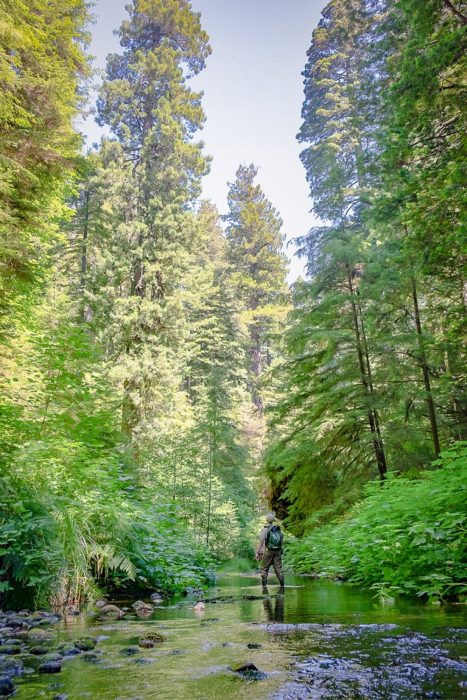
Before moving to Humboldt to study ecological restoration and botany at Humboldt State University, I spent my formative years in Sonoma County exploring the vast rolling grasslands, oak savannas, and dense chaparral that comprise much of the region’s open spaces. My work and study focused on ecosystem dynamics and the botanical diversity of the Bay Area, where the canopy rarely breaks a hundred feet, and the minute details of grassland plants were best viewed with the assistance of a hand lens.
Studying plants in the redwoods has been a dimensional shift from those landscapes that had become so familiar to me. Standing in dappled light at the forest floor, I now find myself straining to see up into the forest canopy, trying to solve the puzzle of reiterated stems and interlocking branches. From far below, I view the hanging gardens of epiphytic plants that grow haphazardly from the tops of broken-topped trees, their secrets out of reach and left to the limits of my imagination. While I still spend a fair amount of time scouring the ground for tiny plants hidden beneath the underbrush, I am aware now more than ever of being suspended in the matrix of an ecosystem that extends far above my head and deep beneath my feet. It is truly a unique experience to stand amidst a forest and, by its depth and sounding, feel it’s age.
Another component of our work this summer has been the continuation of a thirty-year management program to remove invasive species from the Bald Hills. This ecosystem caps the ridgeline above the forests of Redwood Creek along the eastern section of Redwood National and State Parks . These hilltop oak savannas are unique in this region of California. They serve as critical habitat for wildlife and contribute to a diverse and healthy landscape. The oaks here are under threat of conifer encroachment, moving in from the edges of the prairie. It’s open grasslands, home to native grasses and the iconic seasonal blooms of lupines and other wildflowers are threatened by the establishment of invasives such as Scotch Broom, Oxeye Daisy, and Harding Grass. Six weeks of manual removal by our team has helped to keep these beautiful prairies and woodlands open and functioning as habitat for the array of species that utilize this ecosystem.
The goals of Redwoods Rising are by all accounts, ambitious. With 80,000 acres of forest in need of restoration, it is easy to feel overwhelmed by the scope of the project, especially seeing first-hand the poor condition that exists in the majority of these forests. While some may argue that the fight against invasives is futile at best, and the rehabilitation of these forests in the face of global climate change is an impossible task, it is the strong sense of unity between so many organizations that gives me hope in the face of overwhelming odds. What has been so inspiring to me, and what I see as the crux of the Redwoods Rising program is the strong and definitive sense of collaboration that has arisen between Save the Redwoods League and Redwood National and State Parks.
The goal of restoring these forests is huge, and we today will not live long enough to see the fruits of our labor ripen. Our work this summer may be a drop in the bucket of the scope of what needs to be done. Yet today, because of the work of our predecessors, we are light years ahead of where we were thirty years ago. In another thirty, I can only hope that someone might look at our work this summer as the gateway that opened to the restoration of Northern California’s most iconic forest stands. Out in the field, I try to keep in mind that the redwood gains it gigantic stature conquering inch by inch. It is by this same measure we must restore these forests by considering, helping, or removing plant by tiny plant.
Learn more about the 2018 Redwoods Rising Apprentices and the League’s collaborative work to restore the historically logged, recovering forests within Redwood National and State Parks.
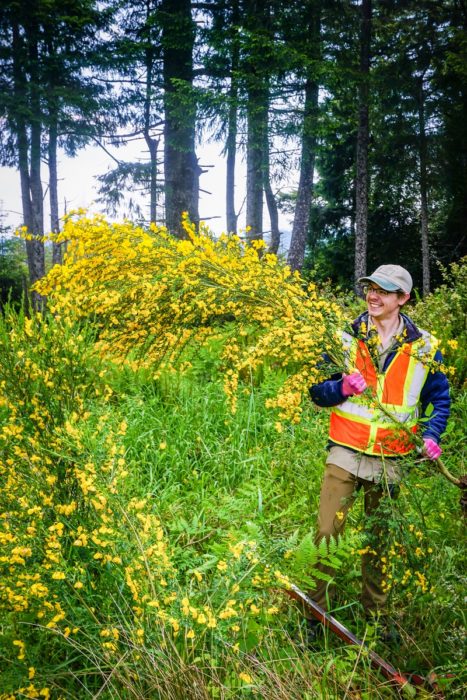


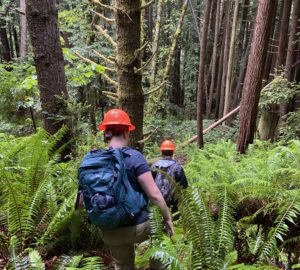
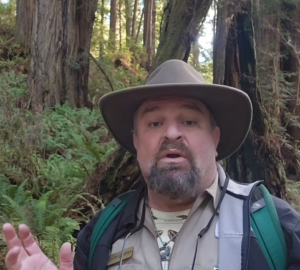


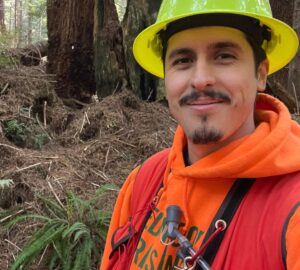

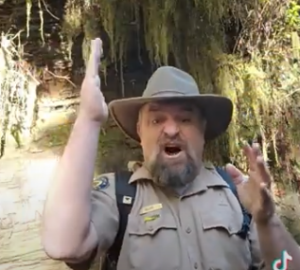
3 Responses to “Notes from the North: Restoration in Action”
Ralph Eschenbach
Great article and great work you did. I enjoyed reading about the project from someone on the ground.
Len
Its true that the indigenous communities of the area (Tolowa, Yurok, Hoopa, Karuk, Wiyot) utilized fire as a tool for landscape management. Redwood National and State Parks has been regularly applying fire to help keep the prairies open. Unfortunately, this tactic does not always eliminate all the invasives, and manual removal is often required to pull out the stuff that survived the fire. Hope this answers your question!
Paul Oeding
Hi Len,
I just recently read the book King Sequoia. I wonder if you had an idea of controlled burning against neophyte.
Didn’t the native people burn the savannah regularly?